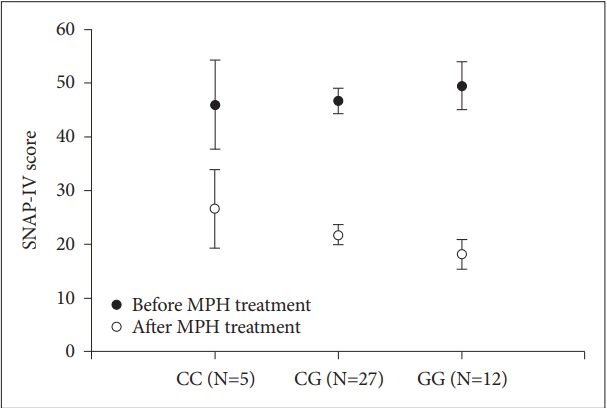1. Chan E, Fogler JM, Hammerness PG. Treatment of attention-deficit/hyperactivity disorder in adolescents: a systematic review. JAMA 2016;315:1997-2008.


2. Rappley MD. Clinical practice. Attention deficit-hyperactivity disorder. N Engl J Med 2005;352:165-173.


5. Arnsten AF, Li BM. Neurobiology of executive functions: catecholamine influences on prefrontal cortical functions. Biol Psychiatry 2005;57:1377-1384.


7. Alamo C, Lopez-Munoz F, Sanchez-Garcia J. Mechanism of action of guanfacine: a postsynaptic differential approach to the treatment of attention deficit hyperactivity disorder (ADHD). Actas Esp Psiquiatr 2016;44:107-112.

9. Stahl SM. Mechanism of action of alpha 2A-adrenergic agonists in attention-deficit/hyperactivity disorder with or without oppositional symptoms. J Clin Psychiatry 2010;71:223-224.


11. Heal DJ, Cheetham SC, Smith SL. The neuropharmacology of ADHD drugs in vivo: insights on efficacy and safety. Neuropharmacology 2009;57:608-618.


12. Wigal SB. Efficacy and safety limitations of attention deficit hyperactivity disorder Pharmacotherapy in pediatric patients. J Pediatr 2009;154:S13-S21.
13. Arnsten AF. The emerging neurobiology of attention deficit hyperactivity disorder: the key role of the prefrontal association cortex. J Pediatr 2009;154:S22-S31.
15. Del Campo N, Chamberlain SR, Sahakian BJ, Robbins TW. The roles of dopamine and noradrenaline in the pathophysiology and treatment of attention-deficit/hyperactivity disorder. Biol Psychiatry 2011;69:e145-e157.


18. Zaiou M, El Amri H. Cardiovascular pharmacogenetics: a promise for genomically-guided therapy and personalized medicine. Clin Genet 2017;91:355-370.


19. Steele M, Jensen PS, Quinn DM. Remission versus response as the goal of therapy in ADHD: a new standard for the field? Clin Ther 2006;28:1892-1908.


20. Vaughan B, Kratochvil CJ. Pharmacotherapy of pediatric attentiondeficit/hyperactivity disorder. Child Adolesc Psychiatr Clin N Am 2012;21:941-955.


21. Purper-Ouakil D, Ramoz N, Lepagnol-Bestel AM, Gorwood P, Simonneau M. Neurobiology of attention deficit/hyperactivity disorder. Pediatr Res 2011;69:69R-76R.


23. Comings DE, Gade-Andavolu R, Gonzalez N, Blake H, Wu S, MacMurray JP. Additive effect of three noradrenergic genes (ADRA2a, ADRA2C, DBH) on attention-deficit hyperactivity disorder and learning disabilities in Tourette syndrome subjects. Clin Genet 1999;55:160-172.


25. Cheon KA, Cho DY, Koo MS, Song DH, Namkoong K. Association between homozygosity of a G allele of the alpha-2a-adrenergic receptor gene and methylphenidate response in Korean children and adolescents with attention-deficit/hyperactivity disorder. Biol Psychiatry 2009;65:564-570.


27. Polanczyk G, Zeni C, Genro JP, Guimaraes AP, Roman T, Hutz MH, et al. Association of the adrenergic alpha2A receptor gene with methylphenidate improvement of inattentive symptoms in children and adolescents with attention-deficit/hyperactivity disorder. Arch Gen Psychiatry 2007;64:218-224.


31. Sun Z, Murry DJ, Sanghani SP, Davis WI, Kedishvili NY, Zou Q, et al. Methylphenidate is stereoselectively hydrolyzed by human carboxylesterase CES1A1. J Pharmacol Exp Ther 2004;310:469-476.


32. Nemoda Z, Angyal N, Tarnok Z, Gadoros J, Sasvari-Szekely M. Carboxylesterase 1 gene polymorphism and methylphenidate response in ADHD. Neuropharmacology 2009;57:731-733.


36. Liu YC, Liu SK, Shang CT, Lin CH, Tu C, Gau SF. Norm of the Chinese Version of the Swanson, Nolan and Pelham, Version IV Scale for ADHD. Taiwan J Psychiatry 2006;20:290-304.
37. Su Y, Yang L, Stein MA, Cao Q, Wang Y. Osmotic release oral system methylphenidate versus atomoxetine for the treatment of attentiondeficit/hyperactivity disorder in chinese youth: 8-week comparative efficacy and 1-year follow-up. J Child Adolesc Psychopharmacol 2016;26:362-371.


38. Lario S, Calls J, Cases A, Oriola J, Torras A, Rivera F. MspI identifies a biallelic polymorphism in the promoter region of the alpha 2A-adrenergic receptor gene. Clin Genet 1997;51:129-130.


39. Schmitz M, Denardin D, Silva TL, Pianca T, Roman T, Hutz MH, et al. Association Between Alpha-2a-adrenergic Receptor Gene and ADHD Inattentive Type. Biol Psychiatry 2006;60:1028-1033.


40. Webster LR, Belfer I. Pharmacogenetics and personalized medicine in pain management. Clin Lab Med 2016;36:493-506.











